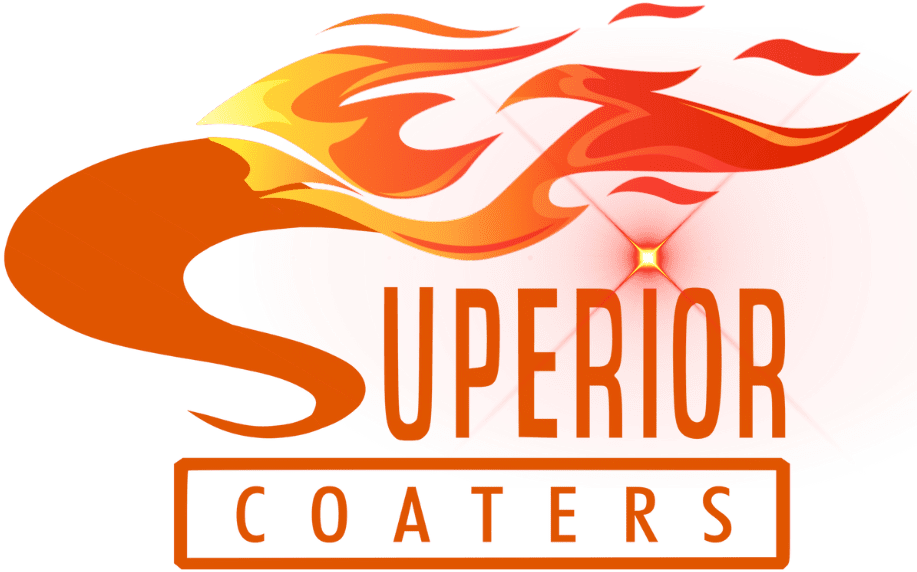The appeal of chrome is timeless. Whether dressing up structural steel in a modern architectural project, adding flair to commercial fixtures, or providing a high-visibility finish to industrial machinery, a bright metallic surface conveys quality, precision, and strength. However, traditional chrome plating processes are often expensive, environmentally challenging, and lack the superior impact resistance required for tough Australian industrial environments.
For fabricators, engineers, and project managers, the solution lies in advanced powder coating technology. Specifically, achieving a genuine, near-mirror chrome finish with the long-term durability demanded by large-scale projects requires moving beyond a simple, single-stage application. It requires the mastery of the two-coat system.
The Limits of a Single-Stage Metallic Coat
While single-stage metallic powder coats—where the reflective flakes are mixed directly into a clear or coloured binder—are widely available, they rarely deliver the true brilliance of chrome.
The primary issue is that in a single coat, the metallic pigments (usually fine aluminium flakes) are partially encapsulated by the resin, dulling their reflectivity. Furthermore, to provide exterior durability, the resin must contain UV inhibitors, which can slightly cloud the finish.
For large-scale, exposed steel and infrastructure, a single-stage metallic powder coat presents two major drawbacks:
- Dullness: The finished product achieves a silver or highly polished aluminium look, but not the deep, wet, mirror-like finish of true chrome.
- Fragility: The metallic pigment is on the surface of the coating. Without protection, the reflective flakes are more vulnerable to damage from abrasion, cleaning chemicals, and environmental fallout, leading to premature deterioration of the aesthetic.
For a true, high-performance chrome alternative, the reflective layer must be isolated and protected, which is the core principle of the two-coat system.
The Core Principle: The Two-Coat System Explained
The two-coat system separates the Aesthetic Layer (the reflectivity) from the Protective Layer (the durability and shine). This layered approach is the industry standard for achieving the highest-gloss, most durable metallic finishes, and is especially critical when coating large, complex steel components like those handled by Superior Coaters.
Layer 1: The Reflective Base Coat (The “Chrome”)
This layer is the engine of the finish. It consists of a specialised, thin coat of chrome-effect powder, which is often a finely milled silver or highly polished aluminum pigment suspended in a minimal amount of resin binder.
- Application: This coat is typically applied at a much lower film thickness than standard powder to maximise the orientation of the metallic flakes. The goal is to lay the flakes as flat and parallel as possible to the steel substrate to create maximum light reflection—the mirror effect.
- Curing: The base coat is then fully or partially cured. This locks the reflective layer in place, preventing the second coat from disturbing the delicate flake orientation. Crucially, this coat provides the look but little of the final protection.
Layer 2: The Protective Top Coat (The “Finish”)
This is where the magic of durability happens, transforming a delicate finish into a commercial-grade, weatherproof coating.
- Composition: This coat is a high-quality, optically clear, high-gloss polyester or polyurethane powder. Its material must be specifically chosen for maximum clarity and UV stability (essential for exterior Australian applications).
- Function: The clear topcoat encapsulates and protects the delicate reflective base coat beneath it. It provides the depth, gloss, weather resistance, and chemical resistance needed to withstand harsh environments, aggressive cleaning, and general wear and tear over decades.
- Customisation: A key advantage of the two-coat system is customisation. By using a transparent tinted top coat (e.g., gold, bronze, or “candy” colours) over the silver base, a client can achieve the look of anodised or plated specialty metals while maintaining the powder coat’s superior structural integrity.
The Critical Role of Pre-Treatment
Even the most advanced two-coat system is fundamentally reliant on the surface preparation of the steel beneath it. For a mirror-like finish like chrome, every single surface imperfection, oil residue, or particle of rust is magnified—the finish will simply not adhere correctly, leading to blistering or premature failure.
For large structural steel, this means the pre-treatment process must be flawless. Superior Coaters’ focus on a multi-stage process (often including abrasive blasting followed by a comprehensive chemical wash/conversion coating) is non-negotiable for metallic finishes:
- Abrasive Blasting: Removes mill scale, rust, and old coatings, providing the optimal surface profile (anchor pattern) for mechanical adhesion.
- Multi-Stage Chemical Clean: Thorough degreasing and rinsing to remove oils, soil, and contaminants.
- Conversion Coating: Application of a chemical layer (like zinc phosphate) that creates a passive, chemically-bonded layer over the steel. This provides the crucial corrosion barrier between the steel and the powder, maximising adhesion and stopping rust from migrating beneath the coating.
Neglecting any step in this pre-treatment process is a guarantee of failure, particularly when applying a demanding chrome-effect finish.
Application Mastery: Techniques for Consistency
Applying standard powder coating to large, complex infrastructure up to 14 metres long is a logistical challenge; applying a two-coat chrome system to the same pieces is an art form that requires deep technical expertise.
The primary enemy of a uniform metallic finish is Mottling (or tiger striping)—where the metallic flakes align unevenly, creating visible dark and light bands across the surface. This is exacerbated on large, flat surfaces.
Expert coaters mitigate this through precision techniques:
- Controlled Film Thickness: Both coats must be applied within a tight tolerance. Applying the base coat too heavily risks dulling, while applying the clear coat too thinly compromises protection.
- Voltage Management: Metallic powders are more susceptible to the Faraday Cage Effect (powder struggling to penetrate corners/recesses) and back-ionisation (the electrical charge repelling fresh powder). Skilled technicians use lower kV settings and precise gun positioning to ensure even flake distribution and full coverage without scorching.
- Environmental Control: The application booth must be meticulously clean and humidity-controlled, as even minute airborne contaminants will be captured and magnified by the mirror-like finish.
The capability to apply this exacting two-coat system consistently across oversized steel is the mark of a true industrial coater, guaranteeing that the aesthetic appeal of chrome is matched by the performance needed for long-term Australian projects.
Durability Meets Design
The two-coat system for chrome-effect powder coatings represents the best of modern finishing technology. It offers the high-end visual appeal of traditional plating without the significant environmental or durability compromises.
For architects and engineers specifying a project where visual impact and extreme longevity are equally important—from urban lighting and street furniture to public works and commercial facades—the decision is clear. By entrusting large-scale steel projects to a coater proficient in the two-coat chrome process, they ensure the steel receives a finish that is not only strikingly reflective but also fully protected against the elements for the structure’s service life.

 07 3375 6777
07 3375 6777